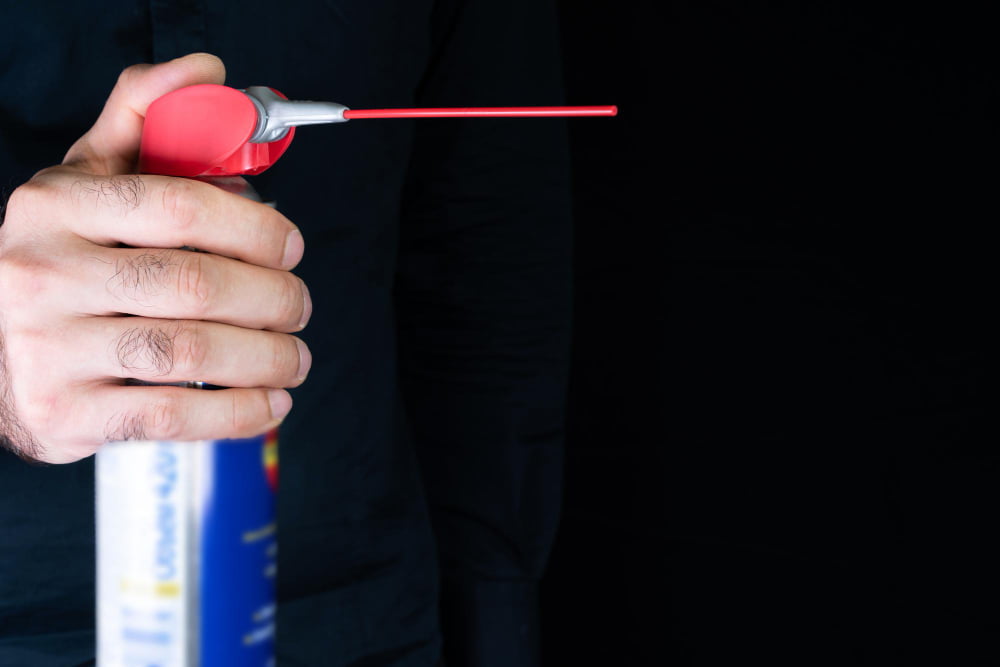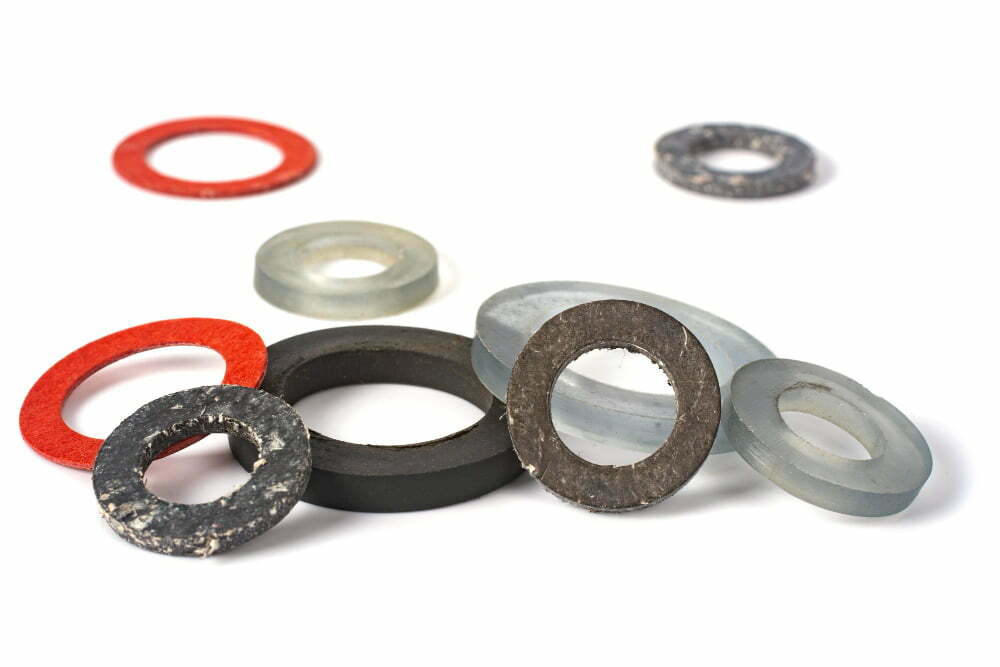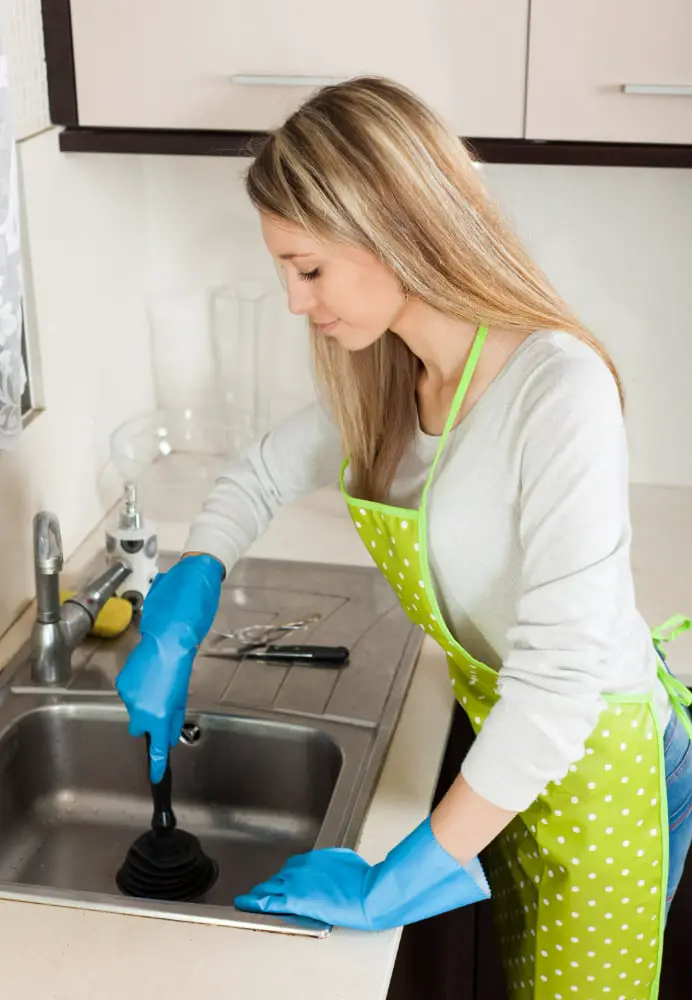Last updated on
No, WD40 is not safe for plumbing. It can cause damage to pipes and seals, leading to leaks and other issues.
Are you tired of dealing with clogged pipes and slow drains in your home? If so, you’ve probably searched for quick and easy solutions to get things flowing smoothly again. One product that often comes up in these searches is WD40.
This popular multi-use spray claims to lubricate, protect, and even clean a wide variety of surfaces. But is it safe to use on your plumbing? In this article, we’ll explore the pros and cons of using WD40 on your pipes, as well as alternative solutions that may be safer and more effective.
Let’s dive in!
Key takeaways:
- WD40 is not safe for plumbing, can cause damage
- Petroleum-based ingredients can break down rubber seals and gaskets
- Chemicals can cause corrosion and deterioration of metal pipes
- Safe alternatives include vinegar and baking soda, plunger or drain snake, and enzymatic cleaners
- Using WD40 on plumbing can lead to long-term issues, potential environmental harm
Table of Contents
WD40 and Plumbing

WD40 is a popular household item that many people keep on hand for various purposes. It’s often used to lubricate squeaky hinges, protect metal surfaces from rust and corrosion, and even remove sticky residue.
However, when it comes to plumbing, WD40 may not be the best solution.
While WD40 can help loosen stuck parts or fittings in your plumbing system temporarily, it’s not designed for long-term use in this context. In fact, using WD40 on your pipes can actually cause more harm than good over time.
The reason for this is that WD40 contains petroleum-based ingredients that can break down rubber seals and gaskets commonly found in plumbing systems. This breakdown of materials leads to leaks and other issues with your pipes over time.
Effects On Pipes

While the spray may initially help to loosen up clogs and improve water flow, its long-term impact on pipes and seals is not worth the temporary fix. The chemicals in WD40 can cause corrosion and deterioration of metal pipes over time, leading to leaks or even burst pipes.
If used improperly or excessively, WD40 can also damage rubber gaskets and other components of your plumbing system.
It’s important to note that while some people have reported success using WD40 for minor plumbing issues like a slow drain or squeaky faucet handle, these results are often short-lived. In most cases where there is a serious blockage or leak in your plumbing system that requires professional attention anyway – so why risk causing further damage with an untested solution?
Safe Alternatives

One of the most popular is vinegar and baking soda. This natural combination can help break down clogs and clear out debris in your pipes without causing any damage.
Another option is using a plunger or drain snake to physically remove blockages from your pipes. These tools are inexpensive and easy to use, making them a great choice for DIY plumbing projects.
For more stubborn clogs, you may want to consider using an enzymatic cleaner specifically designed for drains. These cleaners contain bacteria that eat away at organic matter in your pipes without harming the system itself.
It’s important to remember that while WD40 may seem like a quick fix solution for plumbing issues, it can actually cause more harm than good in the long run.
Potential Risks

One of the biggest risks associated with using WD40 on your plumbing is that it can damage the pipes and seals over time. This is because WD40 contains solvents and other chemicals that can break down plastic and rubber materials commonly found in plumbing systems.
In addition to damaging your pipes, using WD40 on your plumbing could also lead to leaks or other issues down the line. The spray’s lubricating properties may initially help water flow more freely through your drains, but over time it could cause buildup or blockages that are even harder to remove.
Another potential risk of using WD40 on your plumbing is its impact on the environment. If you’re not careful when applying this product, some of it could end up in nearby water sources where it can harm aquatic life.
Application Tips

First and foremost, it’s important to only use WD40 as a last resort when dealing with stubborn clogs or other issues. Before reaching for the spray can, try using a plunger or drain snake to clear out any blockages.
If you do decide to use WD40, be sure to apply it sparingly and directly onto the affected area. Avoid spraying large amounts of the product into your pipes or drains as this can lead to buildup over time.
It’s also worth noting that while some people swear by using WD40 on their plumbing fixtures (such as faucets), doing so may actually cause more harm than good in the long run. Instead of relying on this multi-use spray for all your home maintenance needs, consider investing in specialized products designed specifically for plumbing applications.
While there are certain situations where using WD40 on your plumbing may seem like an easy fix at first glance – such as removing rust from metal pipes – its potential risks outweigh any short-term benefits. By following these application tips and exploring safer alternatives instead of relying solely on this popular product you’ll be able keep your home’s pipes flowing smoothly without causing unnecessary damage along way!




